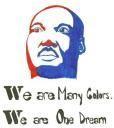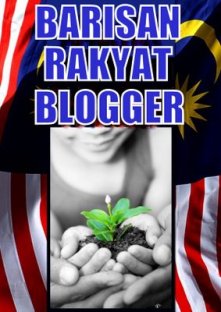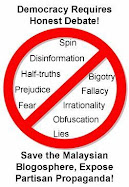I first read that MAFREL (Malaysians for Free and Fair Elections) needed volunteers to act as election observers in Zorro's blog, and decided to sign up. I emailed En. Arphan, who is the honorary secretary of MAFREL, and was sent a registration form to fill up and return. This was followed by a Elections Commission (SPR) form applying for observer status. I finally got to meet him when I delivered the form all signed and sealed.
En. Arphan is a gentleman of the old school, of whom there are very few left; he is the epitome of cordiality and good cheer, and always has time to spend with a friend, even one newly made. Here he is:

The operation centre was a modest single storey terrace house in Teluk Kemang (which I believe was lent by a well wisher). Soon, there assembled a very diverse group of Malaysians, with diverse (even opposing) political views, but all dedicated and united in the desire to see free and fair elections in Malaysia. Some even drove all the way from Kelantan!

- Build confidence in democracy
- Raise awareness and understanding of elections that are truly free and fair
- Advocate for the adoption of better laws and procedures governing elections
- Promote orderly elections free of corruption, abuse of power, violence, intimidation, harassment & fear
- Help detect and report any breach of election regulations and procedure

Our Mission Leader, Kapt. (B) Maizon, being introduced





Our leaders: (from left) Tuan Syed, Kol. (B) Shaharuddin, Kapt. (B) Maizon, and En. Arphan
Having already recced my polling station in the morning, I had the rest of the afternoon free. I decided to trek up to the Tanjung Tuan lighthouse, which you can read about here.
As all campaigning was supposed to cease at midnight, there was the customary final surge of ceramahs that evening. We decided to attend the nearest one, which happened to be one where DSAI would be making a speech. The crowd was big and loud, and the speakers were even louder! One could see people from all walks of life amidst the carnival atmosphere. (Guess who was also there? Zorro, the doyen of the Barisan Rakyat bloggers, and members of the Special Bunch!)

Next morning, there was a rush for the bathroom, then get into our cars and drive to the polling station!
My partner and I got to the polling station in time, and introduced ourselves to the PO and police officers on duty. At 0800 hrs sharp, the polling began. It was humbling to see before us the exercising a human right that went all the way back to the dawn of democracy in Athens.
Outside the polling station, the excitement was palpable. All sides tried to get away with breaches of polling regulations and etiquette; my partner and I were kept quite busy!
Our final duty was to observe the counting. Once that was done, all that was left was to head back to op centre, and submit our reports for the day.
It was a long and tiring day, but it felt good to have done a little bit for Democracy. I'm looking forward to learning more about our elections, and to participating in the next ones. Let's never forget that "Vibrant Democracy Requires Eternal Vigilance!"
Sincerely,
Malaysian Heart










































